Retrogaming, also known as classic gaming and old school gaming, is the playing older consoles, and/or video games (generally arcade), in contemporary times. Usually, retrogaming is based upon systems that are obsolete or discontinued. Free80sarcade.com offers FREE Online gameplay of thousands of games from these classic 1980s video game consoles directly in your web browser.
Atari 2600
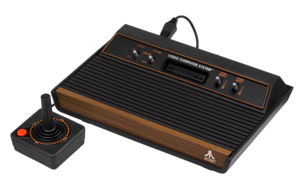
Release date: September 1977
Lifespan: 1977–1992
Introductory price: US$199
Units sold: 30 million
Media: ROM cartridge
CPU: 8-bit MOS Technology 6507 @ 1.19 MHz
Memory: 128 bytes RAM
The Atari 2600 is a home video game console developed and produced by Atari. Released in September 1977, it popularized the use of microprocessor-based hardware and of games stored on swappable ROM cartridges. In 1982, the Atari 2600 was the dominant game system. Play Games Online
Atari 5200

Release date: 1982
Discontinued: May 21, 1984
Units sold: 1 million
Media: ROM cartridge
CPU: MOS 6502C @ 1.79 MHz
The Atari 5200 is a home video game console introduced in 1982 by Atari, Inc. as a higher-end complement for the popular Atari 2600. Created to compete with Intellivision, the 5200 wound up a direct competitor of ColecoVision shortly after its release. On May 21, 1984, during a press conference at which the Atari 7800 was introduced, company executives revealed that the 5200 had been discontinued after just two years on the market. Play Games Online
Atari 7800
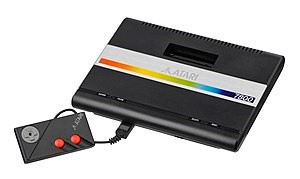
Release date: May 1986
Introductory price: US$140
Discontinued: January 1, 1992
Media: ROM cartridge
CPU: Atari SALLY (“6502C”) @ 1.19-1.79 MHz
Memory: 4KB RAM, 4KB BIOS ROM, 48KB cartridge ROM space
Display: 160×240, 320×240 (288 vertical for PAL), 25 colors out of 256
The Atari 7800, is a home video game console officially released by Atari Corporation in 1986 as the successor to both the Atari 2600 and Atari 5200. The 7800 has significantly improved graphics hardware over Atari’s previous consoles. Play Games Online
Nintendo Entertainment System
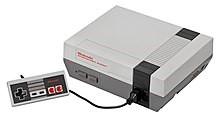
Release date: October 18, 1985
Lifespan: 1985–1995
Introductory price: $179 (US Deluxe Set)
Discontinued: August 14, 1995
CPU: Ricoh 2A03 8-bit processor (MOS Technology 6502 core)
The Nintendo Entertainment System (NES) is an 8-bit third-generation home video game console produced by Nintendo. As one of the bestselling consoles of its time, the NES helped revitalize the US video game industry following the video game crash of 1983. Play Games Online
Super Nintendo Entertainment System (SNES)

Release date: August 23, 1991
Lifespan: 1991–1999
Introductory price: $199 (US)
Units Sold Worldwide: 49.10 million
CPU: Ricoh 5822 @ 3.58 MHz
The Super Nintendo Entertainment System (SNES) is 16-bit home video game console produced by Nintendo. As one of the bestselling consoles of its time, the SNES helped continue the popularity of game consoles into the 1990s. The Super NES is Nintendo’s second programmable home console, following the Nintendo Entertainment System (NES). The console introduced advanced graphics and sound capabilities compared with other systems at the time, like the Sega Genesis. It was designed to accommodate the ongoing development of a variety of enhancement chips integrated into game cartridges to be more competitive into the next generation. The Super NES received largely positive reviews and was a global success, becoming the best-selling console of the 16-bit era.
Play Games Online
Sega SG-1000
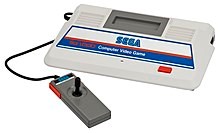
Release date: July 15, 1983
Discontinued: July 1984
CPU: Zilog Z80 @ 3.58 MHz
Memory: 1 KB RAM
Display: 256 × 192 resolution, 16 colors, 32 on-screen sprites
The SG-1000 is a home video game console manufactured by Sega. It was Sega’s first entry into the home video game hardware business. The SG-1000 was released in several forms, including the SC-3000 computer and the redesigned SG-1000 II released in 1984. A third iteration of the console, the Sega Mark III, was released in 1985. It provided an improved custom video display processor over previous iterations and served as the basis for the Sega Master System in 1986. Play Games Online
Sega Master System
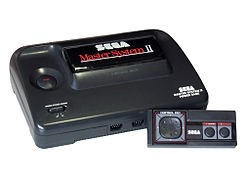
Release date: September 1986
Lifespan: 1986–1992
Introductory price: US$200
CPU: Zilog Z80A @ 4 MHz
Memory: 8 kB RAM, 16 kB VRAM
Display: 256 × 192 resolution, 32 colors on-screen
The Sega Master System is a third-generation 8-bit home video game console manufactured by Sega. It was originally a remodeled export version of the Sega Mark III, the third iteration of the SG-1000 series of consoles, and featured enhanced graphical capabilities over its predecessors. The Master System launched in North America in 1986. Play Games Online
ColecoVision
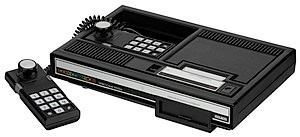
Release date: August 1982
Discontinued: 1985
CPU: Zilog Z80
Memory: 1 kB scratchpad RAM, 16 kB video RAM, 8kB ROM
ColecoVision is a video-game console developed by Coleco and launched in North America in August 1982. The console offered a closer experience to more powerful arcade video games compared to competitors such as the Atari 2600 and Atari 5200. A later module converts ColecoVision into the Coleco Adam home computer.
Football Hand-held Game

Electronic hand-held game simply called “Football” and “Football II”. It consisted of a small screen with little red blips on top and a hand-full of buttons on the bottom. It made an annoying “beep” after every play.
Game Boy
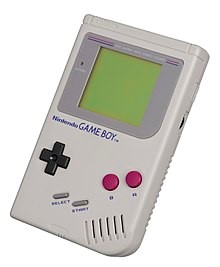
Release date: September 1989
Lifespan: 1989–2003
Introductory price: US$89.99
Discontinued: March 23, 2003
CPU: Sharp LR35902 core @ 4.19 MHz
Display: STN LCD 160 × 144 pixels
Power: 4 × AA batteries
The Game Boy is an 8-bit handheld game console developed and manufactured by Nintendo. The first handheld in the Game Boy family. The console features a dull green dot-matrix screen with adjustable contrast dial, five control buttons (a directional pad, two game buttons, and “START” and “SELECT”), a single speaker with adjustable volume dial, and, like its rivals, uses cartridges as physical media for games.
Intellivision
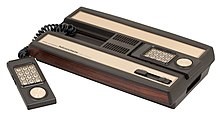
Release date: 1979
Lifespan: 1979-1990
Introductory price: US$275
CPU: GI CP1610
Memory: 1K RAM, 6K ROM
The Intellivision is a home video game console released by Mattel Electronics in 1979. It’s main competitor was the Atari 2600. To compete, it was to have rich graphics and long lasting gameplay.
Game Gear
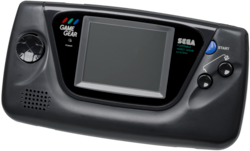
Release date: April 1991
Introductory price: US$149.99
CPU: Zilog Z80 @ 3.5 MHz
Memory: 8kB RAM, 16kB VRAM
Display: 3.2-inch backlit screen, 32 colors on-screen
The Segs Game Gear is an 8-bit handheld game console released by Sega in April 1991 throughout North America. The Game Gear primarily competed with Nintendo’s Game Boy. It shares much of its hardware with the Master System, and can play Master System games by the use of an adapter. Sega positioned the Game Gear, which had a full-color backlit screen with a landscape format, as a technologically superior handheld to the Game Boy.
TRS-80 Color Computer
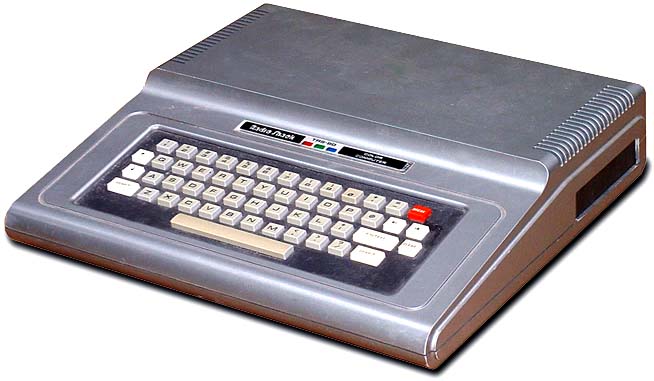
Release date: September 1980; 41 years ago
Introductory price: US$399 (equivalent to $1,250 in 2020)
CPU: 6809E @ 0.895 / 1.79 MHz
Memory: 4 / 16 / 32 / 64 / 128 / 512 KB
Graphics: MC6847 video display generator
The RadioShack TRS-80 Color Computer, later marketed as the Tandy Color Computer and sometimes nicknamed the CoCo, is a line of home computers developed and sold by Tandy Corporation. All Color Computer models shipped with Color BASIC, an implementation of Microsoft BASIC, in ROM.

